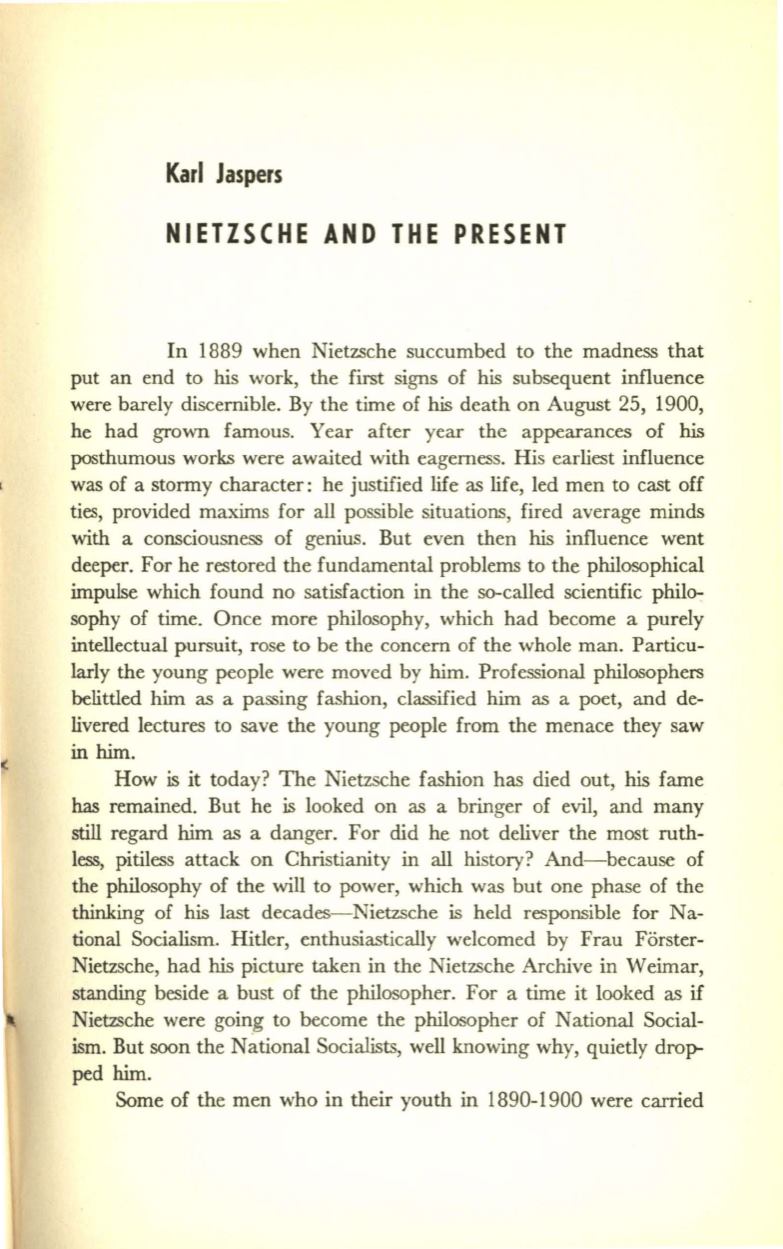
Karl Jaspers
NIETZSCHE AND THE PRESENT
In
1889 when Nietzsche succumbed to the madness that
put an end to his work, the first signs of his subsequent influence
were barely discernible. By the time of his death on August 25, 1900,
he had grown famous. Year after year the appearances of
his
posthumous works were awaited with eagerness. His earliest influence
was of a stormy character: he justified life as life, led men to cast off
ties, provided maxims for all possible situations, fired average minds
with a consciousness of genius. But even then his influence went
deeper. For he restored the fundamental problems to the philosophical
impulse which found no satisfaction in the so-called scientific philo–
sophy of time. Once more philosophy, which had become a purely
intellectual pursuit, rose to be the concern of the whole man. Particu–
larly the young people were moved by him. Professional philosophers
belittled him as a passing fashion, classified him as a poet, and de–
livered lectures to save the young people from the menace they saw
in
him.
How is it today? The Nietzsche fashion has died out, his fame
has
remained. But he is looked on as a bringer of evil, and many
still regard him as a danger. For did he not deliver the most ruth–
less, pitiless attack on Christianity in all history? And- because of
the philosophy of the will to power, which was but one phase of the
thinking of his last decades-Nietzsche is held responsible for Na–
tional Socialism. Hitler, enthusiastically welcomed by Frau Forster–
Nietzsche, had
his
picture taken in the Nietzsche Archive in Weimar,
standing beside a bust of the philosopher. For a time it looked as if
Nietzsche were goin,g to become the philosopher of National Social–
ism. But soon the National Socialists, well knowing why, quietly drop–
ped
him.
Some of the men who in their youth in 1890-1900 were carried


